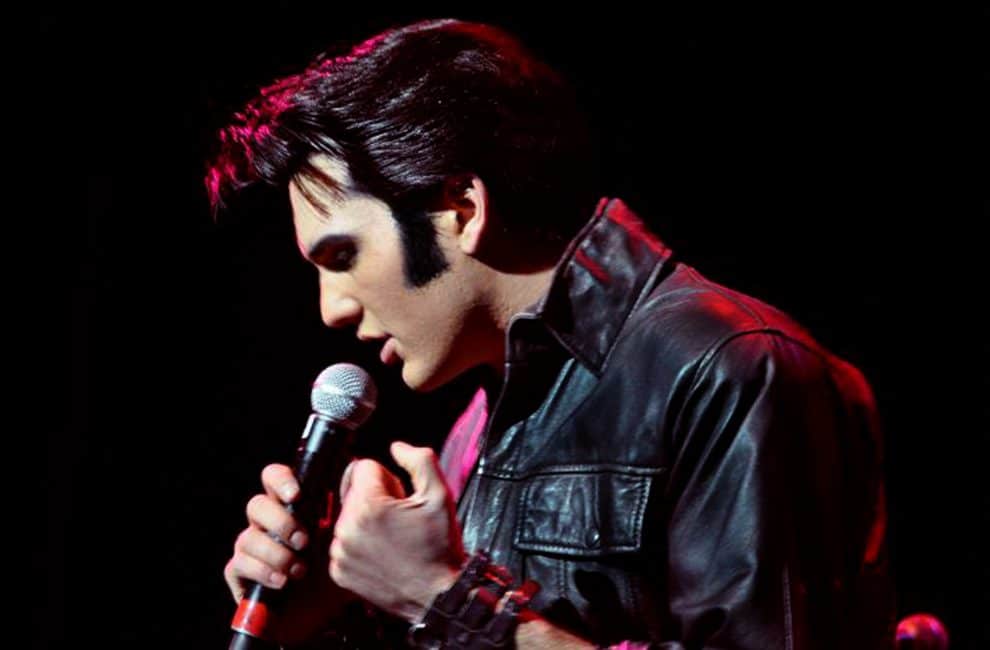
Burning Love: A New Elvis Tribute Show
Just don’t call them Elvis impersonators. It’s “tribute artists,” thank you, thank you very much.
It takes more than a jumpsuit and a jet-black pompadour to do this well. Show promoter Omar Farag says that for the first couple of decades after the King’s death, it seemed like you couldn’t swing a dead cat without hitting a C-level Elvis impersonator in a cheap wig and Party City jumpsuit. These days, however, most of those guys have gone the way of the dodo. The folks who do it now are high-quality performers who work traveling extravaganzas and (of course) tourist draws like Branson, where one of this show’s four headliners, Cody Ray Slaughter, recently ended a two-show-per-day run. Just call him a rovin’ roustabout.
Top-drawer Elvises (Elvi?) specialize. The three biggest roles in the Elvis Tribute Artist Spectacular are Young Rockabilly Elvis, “1968 Comeback Special” Black Leather Elvis, and ’70s Rhinestone Jumpsuit Elvis.
The performers motor through 40 to 50 songs during the show. Which still barely scratches the surface of the King’s approximately 800 recorded tunes.
Don’t know much about Elvis? There’s one performance you should watch first. And that would be Presley’s 1968 comeback special, originally broadcast on NBC and viewable now on YouTube. “I think pretty much anybody can look at that and think, That’s freakin’ badass,” Slaughter says of the swaggering 50-year-old concert.
Yes, there are lots of older women in the crowd. Farag says his shows are a veritable United Nations of races and creeds. But when pressed, he describes the “typical” fan as a 55-to-60-year-old woman—though often accompanied by a daughter, maybe even granddaughters. “We get a lot of that,” Farag says, “because it’s one of the few shows that grandmothers can bring their granddaughters to.”
Even Slaughter gets unnerved by artists who are a little too “into” their Elvis persona. It can be, well, “Too Much.” Slaughter, for one, is happy to relinquish his role when the curtain falls, and he’s a little put off by “entertainers” who talk and dress like Elvis during their downtime. “I know who I am as a person, and when I’m not onstage, I’m myself, just wearing a baseball cap and blue jeans,” he says.
Not that he doesn’t still get “recognized.” Slaughter looks so much like Presley, he may be responsible for keeping those “Elvis is alive” rumors going. “I still get looks every now and then, particularly in places where they don’t know the real me,” he says. “Someone will say, ‘Hey, man, you look like Elvis, and I’ll say, ‘Thanks.’ It’s a compliment.”
Some fans can’t separate these fantasy personas from reality—but sometimes that’s okay. The typical Elvis tribute crowd is more than happy to get all shook up about the proceedings. But they obviously don’t confuse the performers with the Real Deal. Unless they happen to be little kids—which Slaughter is totally cool with. Let’s just say that if a 5-year-old thinks he’s the actual Elvis, Slaughter won’t burst their rhinestone-encrusted bubble. “Sometimes this can get monotonous, and I think, What am I doing with my life?” he says. “And then you’ll meet an excited little kid who says, ‘I’ve seen all your movies.’ And I’m thinking, This child believes that I’m Elvis. It’s mind-blowing.”
There’s only one rule at an Elvis tribute concert: Don’t be cruel. Not feeling it? Just keep it down and don’t ruin the experience for others. Hecklers are the bane of tribute artists, just as they are for comedians and other entertainers. “Don’t get smashed and make the show about you,” says Slaughter. “Be respectful of the people around you, because they love Elvis, and they get this show once a year, and they take it seriously. So be cool.”






